Abstract
1. When human blood platelets were incubated aerobically in plasma containing 2 × 10-7 to 10-3M radioactive guanethidine for 10 min to 6 hr, the drug was accumulated against a concentration gradient until concentration ratios (platelet/plasma) of up to 80:1 were obtained.
2. The decline in rate of uptake after 3 hr appeared to result from a decrease in platelet viability, because accumulation was reduced by prolonged incubation before addition of guanethidine.
3. Uptake was energy-dependent because it was inhibited by cold and ouabain.
4. Sodium ions were essential for guanethidine uptake and retention of 5-hydroxytryptamine (5-HT).
5. Accumulation was inhibited by 5-HT, desipramine, cocaine, dexamphetamine, bretylium, tyramine and noradrenaline; bethanidine, p-chlorophenylalanine and (-)-α-methyldopa were inactive.
6. Guanethidine was tightly bound to platelets, only 10% being lost from labelled cells during 60 min incubation in drug-free plasma; but efflux was increased by addition of amphetamine.
7. The binding sites for guanethidine seemed to be different from those for 5-HT since guanethidine accumulation was independent of 5-HT levels, and neither guanethidine uptake or release were affected by reserpine.
8. Guanethidine was not metabolized by platelets or plasma in vitro.
9. We consider that, if our results regarding uptake, binding and release of guanethidine are confirmed in vivo, and also found to apply to other pharmacologically active agents, then the eventual loss of a platelet-bound substance may increase pharmacological action by raising plasma levels.
Full text
PDF
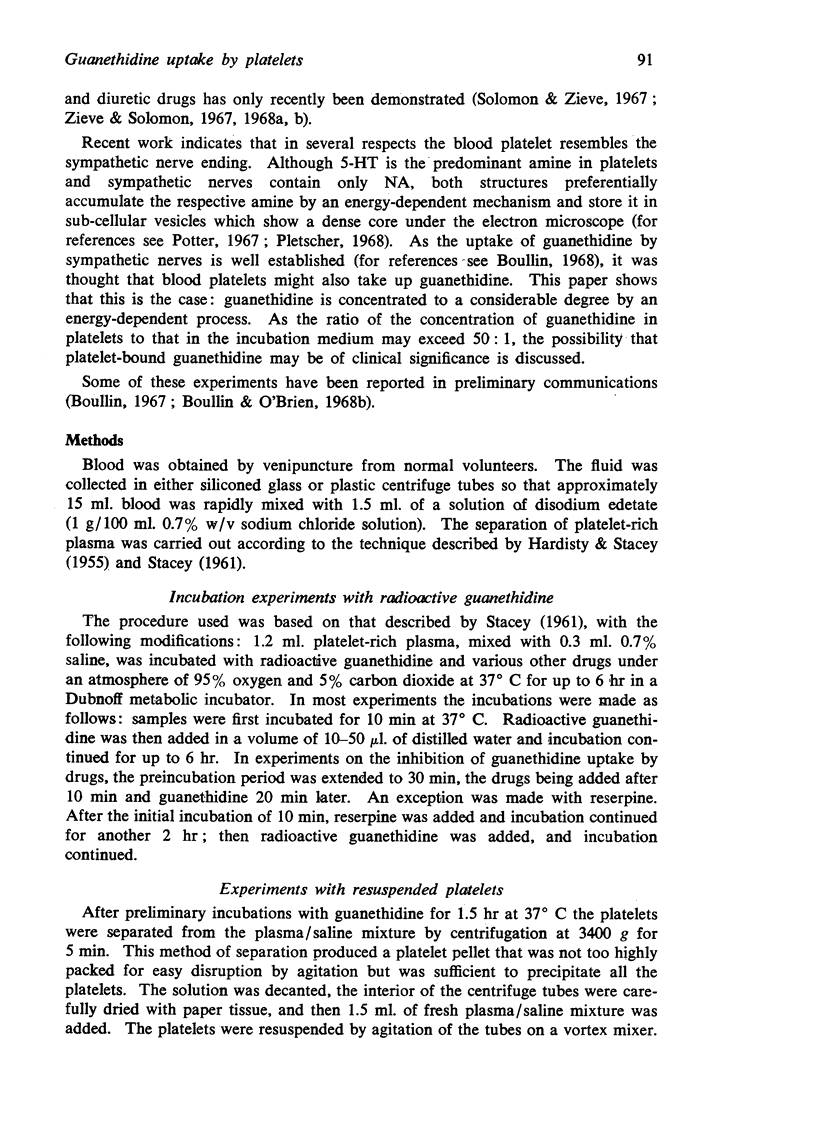
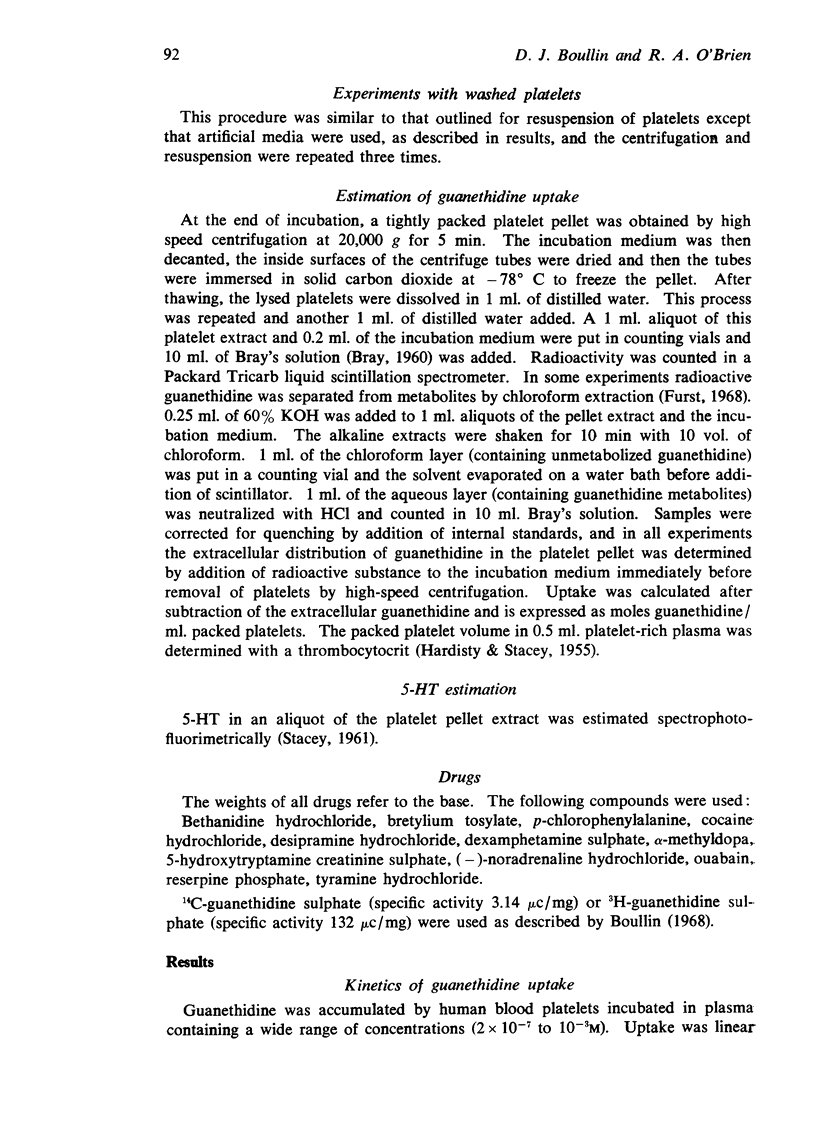
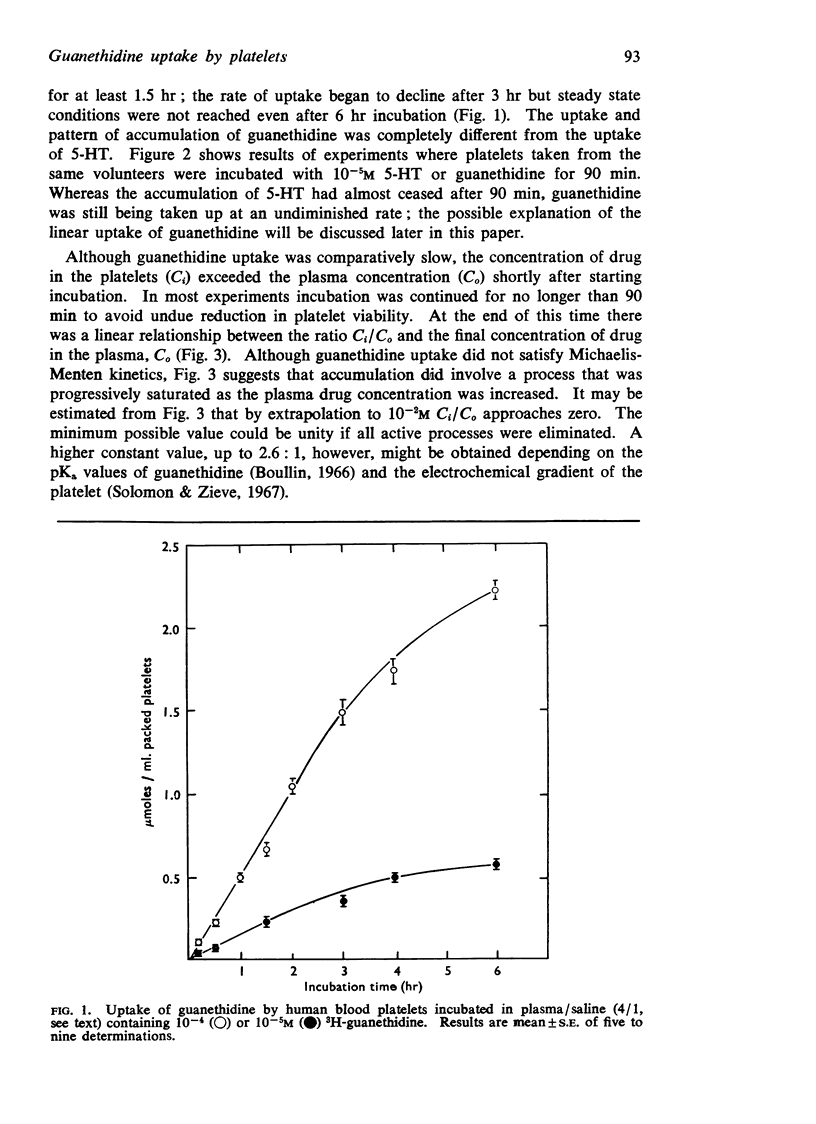
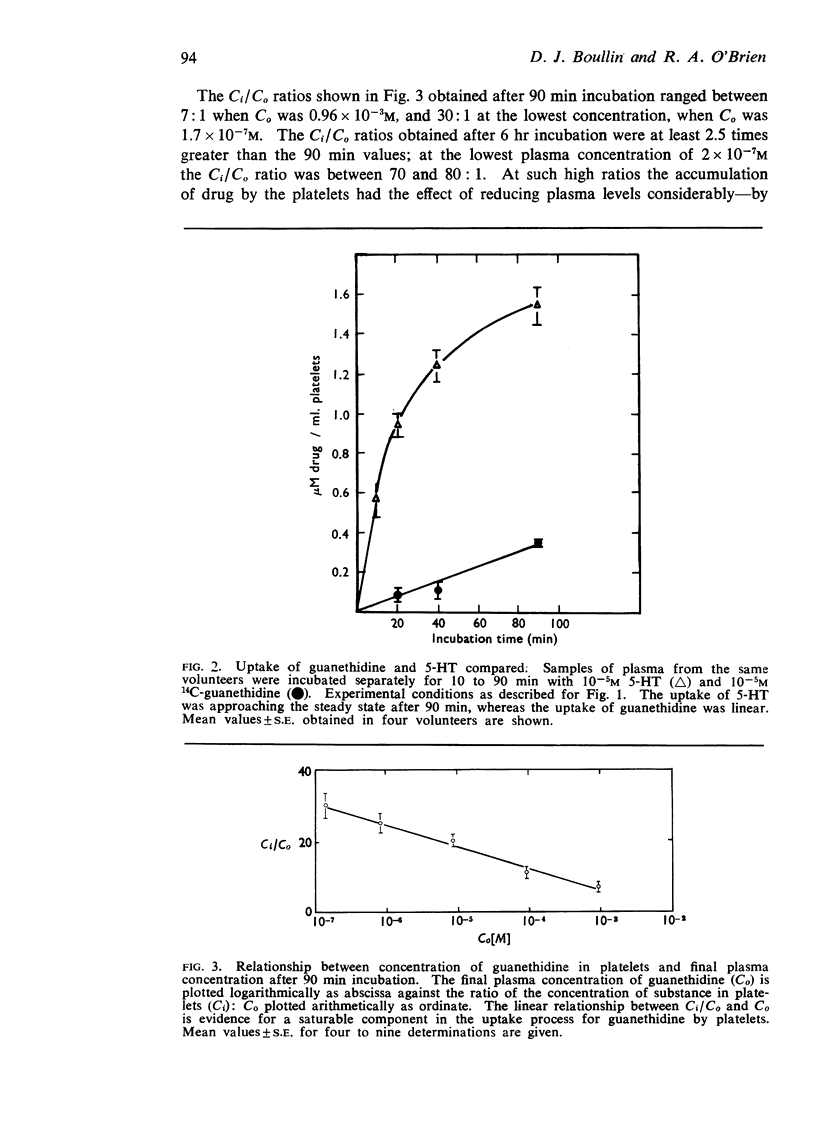

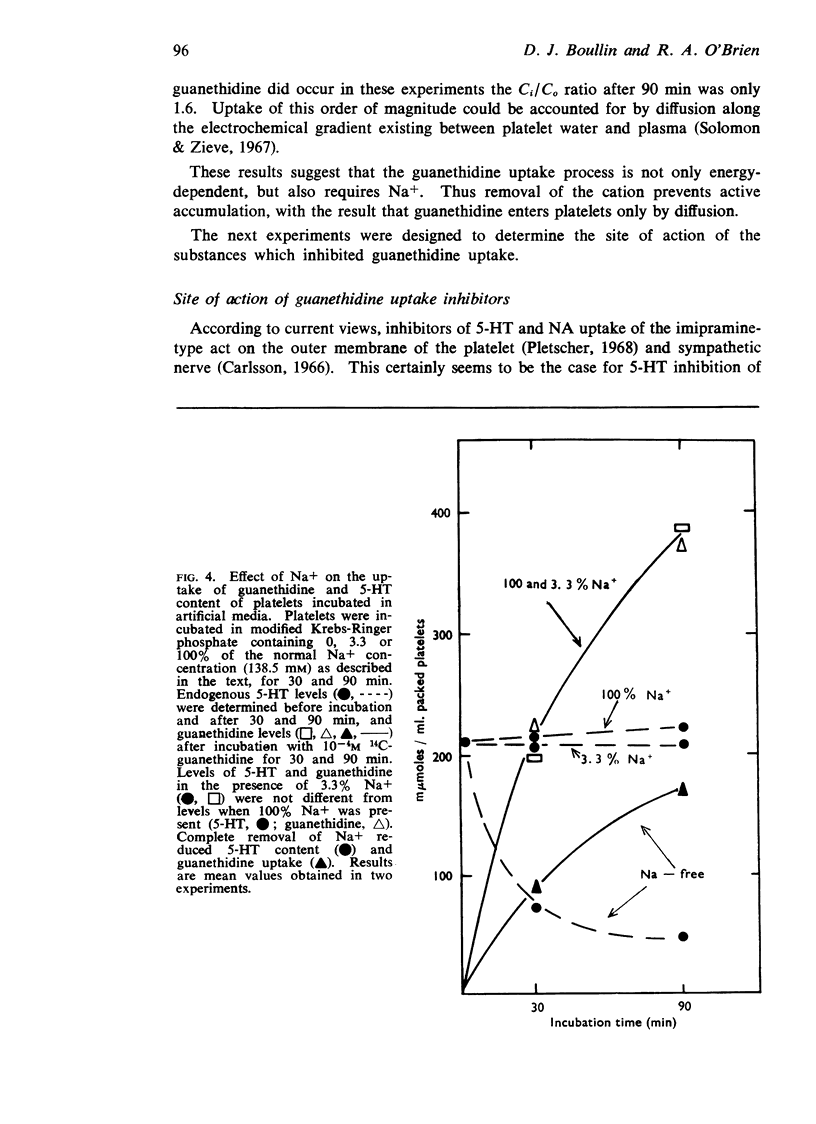
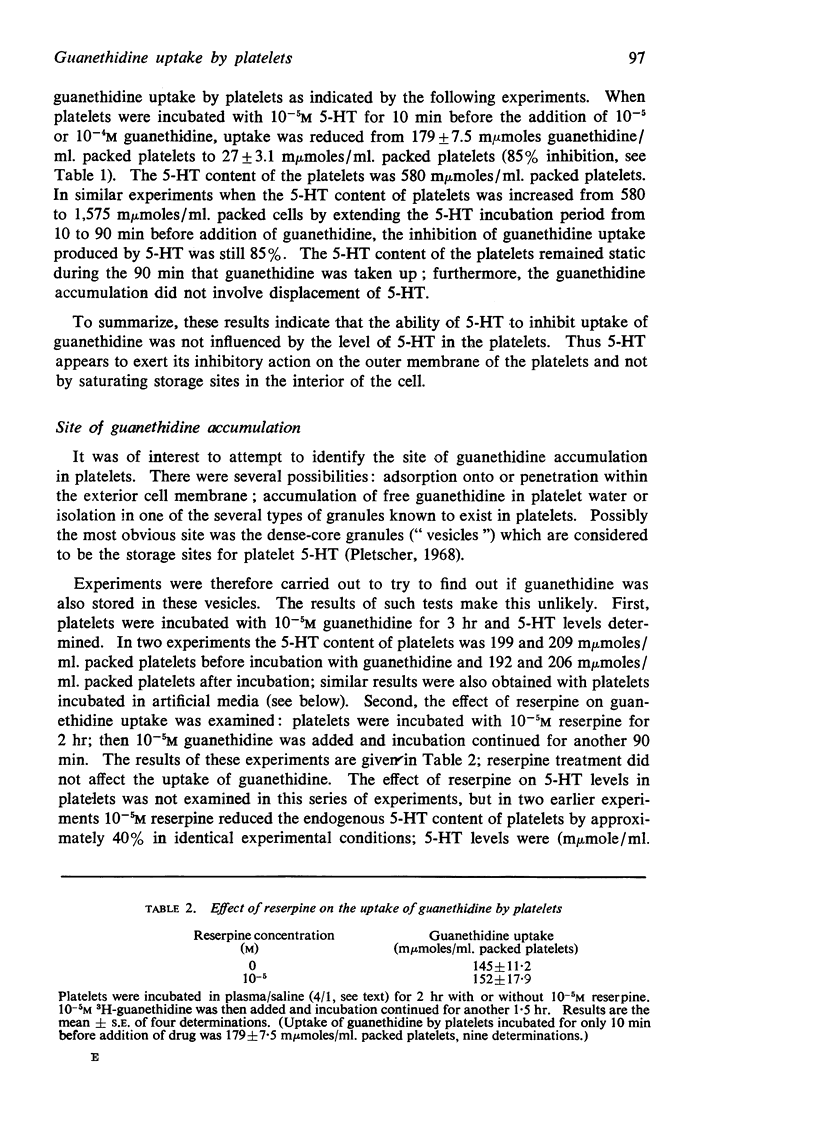
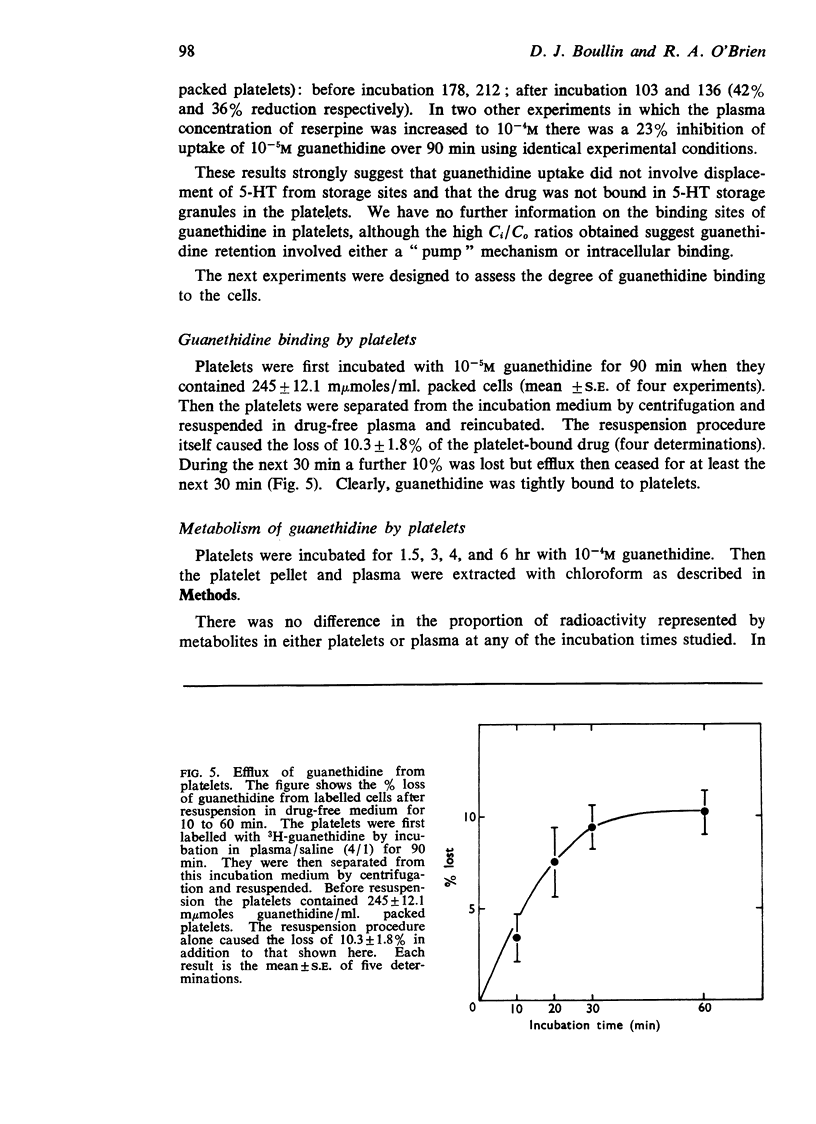

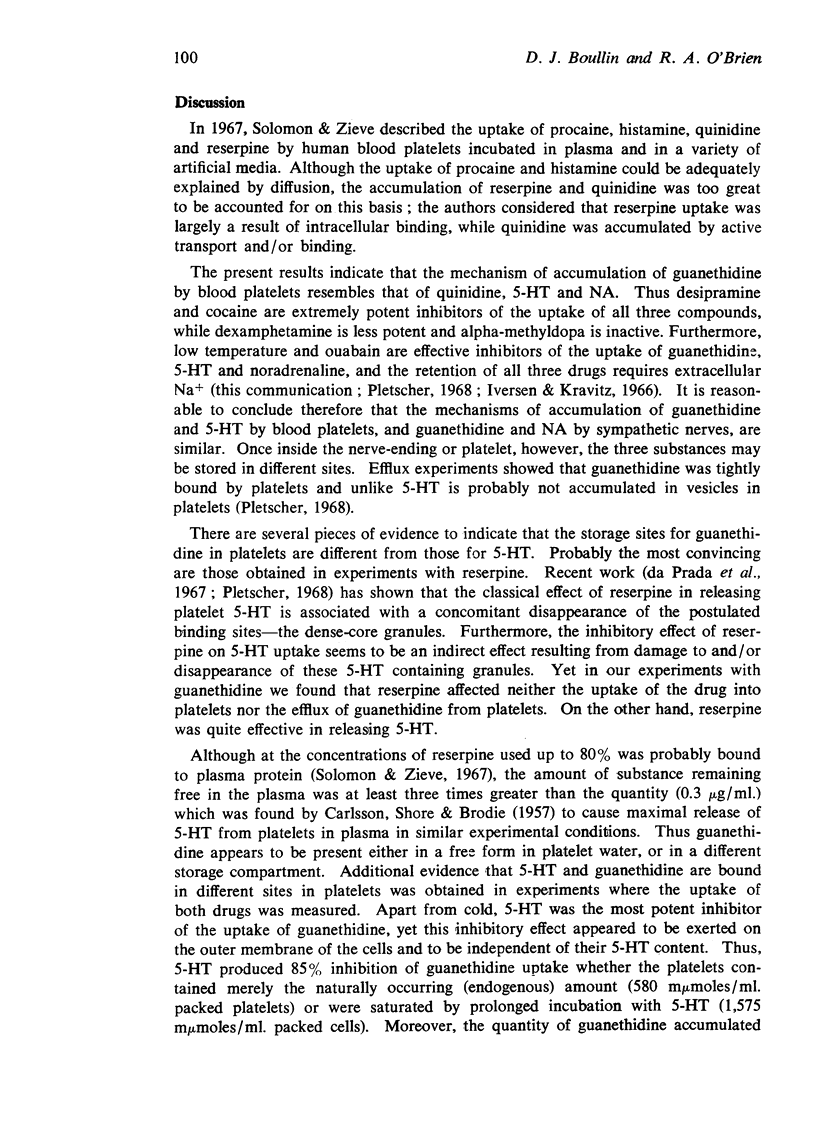


Selected References
These references are in PubMed. This may not be the complete list of references from this article.
- BORN G. V., GILLSON R. E. Studies on the uptake of 5-hydroxytryptamine by blood platelets. J Physiol. 1959 Jun 11;146(3):472–491. doi: 10.1113/jphysiol.1959.sp006206. [DOI] [PMC free article] [PubMed] [Google Scholar]
- Boullin D. J. Evidence for intra-cellular guanethidine stores in the fat heart revealed after removal of calcium ions. Br J Pharmacol Chemother. 1968 Jan;32(1):145–155. doi: 10.1111/j.1476-5381.1968.tb00438.x. [DOI] [PMC free article] [PubMed] [Google Scholar]
- CARLSSON A., SHORE P. A., BRODIE B. B. Release of serotonin from blood platelets by reserpine in vitro. J Pharmacol Exp Ther. 1957 Jul;120(3):334–339. [PubMed] [Google Scholar]
- Carlsson A. Modification of sympathetic function. Pharmacological depletion of catecholamine stores. Pharmacol Rev. 1966 Mar;18(1):541–549. [PubMed] [Google Scholar]
- Furst C. J. Studies on the distribution and excretion of a metabolite of guanethidine in the rat. Br J Pharmacol Chemother. 1968 Jan;32(1):57–64. doi: 10.1111/j.1476-5381.1968.tb00429.x. [DOI] [PMC free article] [PubMed] [Google Scholar]
- HARDISTY R. M., STACEY R. S. 5-Hydroxytryptamine in normal human platelets. J Physiol. 1955 Dec 29;130(3):711–720. doi: 10.1113/jphysiol.1955.sp005437. [DOI] [PMC free article] [PubMed] [Google Scholar]
- Iversen L. L., Kravitz E. A. Sodium dependence of transmitter uptake at adrenergic nerve terminals. Mol Pharmacol. 1966 Jul;2(4):360–362. [PubMed] [Google Scholar]
- Mills D. C., Robb I. A., Roberts G. C. The release of nucleotides, 5-hydroxytryptamine and enzymes from human blood platelets during aggregation. J Physiol. 1968 Apr;195(3):715–729. doi: 10.1113/jphysiol.1968.sp008484. [DOI] [PMC free article] [PubMed] [Google Scholar]
- Pletscher A. Metabolism, transfer and storage of 5-hydroxytryptamine in blood platelets. Br J Pharmacol Chemother. 1968 Jan;32(1):1–16. doi: 10.1111/j.1476-5381.1968.tb00423.x. [DOI] [PMC free article] [PubMed] [Google Scholar]
- SCHANKER L. S., MORRISON A. S. PHYSIOLOGICAL DISPOSITION OF GUANETHIDINE IN THE RAT AND ITS UPTAKE BY HEART SLICES. Int J Neuropharmacol. 1965 Feb;4:27–39. doi: 10.1016/0028-3908(65)90044-4. [DOI] [PubMed] [Google Scholar]
- Solomon H. M., Zieve P. D. The accumulation of organic bases by the human platelet. J Pharmacol Exp Ther. 1967 Jan;155(1):112–116. [PubMed] [Google Scholar]
- Zieve P. D., Solomon H. M. Accumulation of lipid-insoluble compounds by the human platelet. Am J Physiol. 1967 Nov;213(5):1275–1277. doi: 10.1152/ajplegacy.1967.213.5.1275. [DOI] [PubMed] [Google Scholar]
- Zieve P. D., Solomon H. M. Uptake of amino acids by the human platelet. Am J Physiol. 1968 Jan;214(1):58–61. doi: 10.1152/ajplegacy.1968.214.1.58. [DOI] [PubMed] [Google Scholar]
- da Prada M., Tranzer J. P., Pletscher A. Effect of drugs and cations on ultrastructure and 5-hydroxytryptamine content of blood platelets. J Pharmacol Exp Ther. 1967 Dec;158(3):394–398. [PubMed] [Google Scholar]


